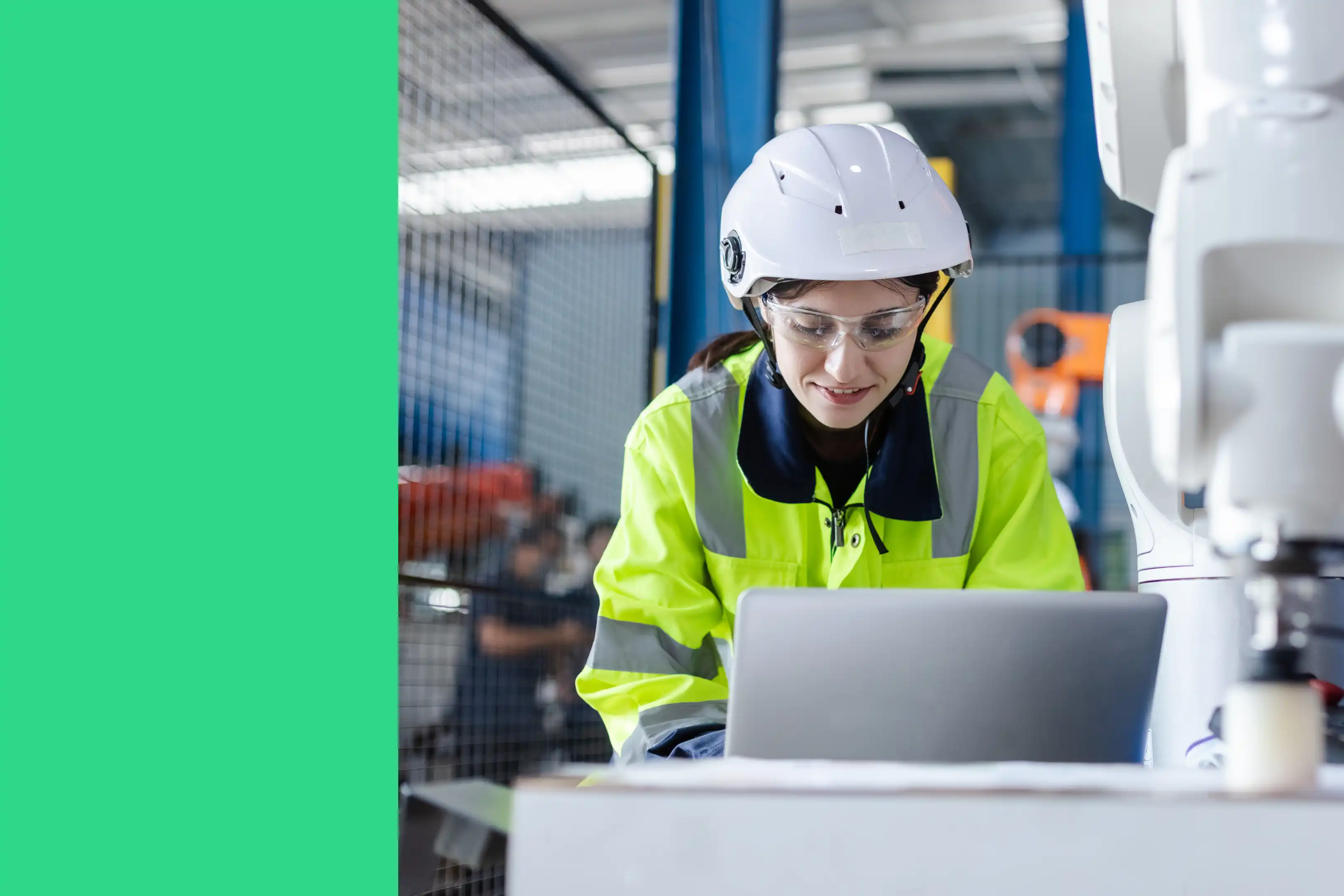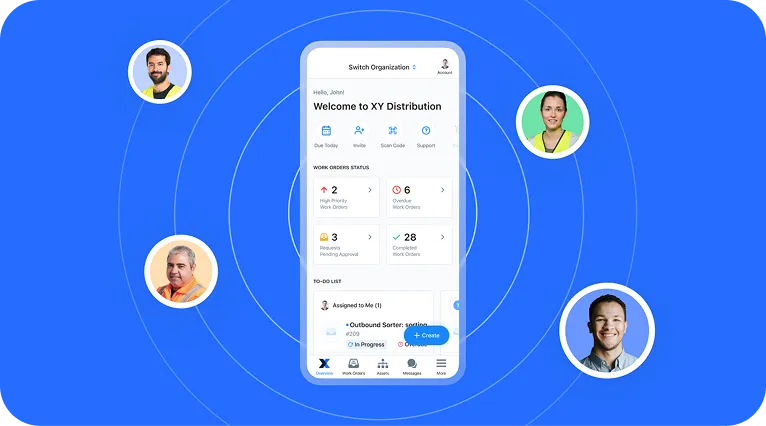
According to NIST research, advanced maintenance techniques like preventive and condition-based maintenance can reduce the following:
- Maintenance costs by 15% to 98%
- Defects and/or rework by 18% to 90%
- Breakdowns by 65% to 90%
But implementing advanced technologies involves upfront and ongoing costs. This makes maintenance cost management a top priority. The more cost-effectively you implement these factory maintenance technologies, the higher your return on investment. This post will help you understand how CMMS saves on factory maintenance costs.
Here’s a preview: CMMS (computerized maintenance management system) solutions like MaintainX streamline and automate maintenance. This helps run maintenance operations efficiently, which in turn helps reduce defective production, downtime, and maintenance costs.
How CMMS Helps Reduce Factory Maintenance Costs
CMMS software solutions are designed to streamline your maintenance workflow. They allow you to manage work orders and spare parts inventory, track critical maintenance KPIs and metrics like equipment downtime, and collaborate with the maintenance team.
Choosing the right CMMS is critical to reducing your maintenance costs. That’s where MaintainX (a mobile-first, cloud-based CMMS solution) comes in. Below, we explain five ways CMMS helps reduce factory maintenance costs.
1. Helps Implement Advanced Maintenance Techniques
Conventional maintenance methods like reactive maintenance can increase unplanned downtime and potentially cost your business millions.
Unplanned downtime costs industrial manufacturers an estimated $50 billion annually. Equipment failure is the cause of 42 percent of this unplanned downtime. Unplanned outages result in excessive maintenance, repair, and equipment replacement. Similarly, outdated maintenance procedures waste resources and may expose staff to greater safety risks.
Advanced maintenance techniques require extra resources but are worth the investment. Preventive maintenance techniques like condition-based maintenance are one of the most effective approaches to minimizing failures.
Condition-based maintenance involves monitoring equipment using sensors. For example, you could use an accelerometer to monitor a machine’s vibrations. Pull that information into your CMMS and configure the CMMS to notify you whenever the vibration breaches a certain threshold. This allows you to perform maintenance only when needed, prevent failure, and increase uptime.
2. Improves Asset and Parts Inventory Management
Say one of your machines broke down. You need to replace a machine part, but you don’t have the part in your inventory. As a result, production halts, and you lose precious time.
CMMS helps track parts inventory so you always have the parts needed to fix a piece of equipment. Instead of wasting time maintaining a spreadsheet, let the CMMS automate parts inventory management.
Maintenance software also reduces the administrative cost of asset management. Teams don’t need to spend time manually creating paper-based records. A CMMS solution can log actions automatically in most cases and make the records centrally available.
For example, as a technician goes through the checklist of maintenance activities, the CMMS will log these actions in real time and automatically create an audit trail.
3. Streamlines Maintenance Processes
Work order software solutions like MaintainX streamline work order management. You can create work orders (and schedule recurring ones) within seconds and assign them to a technician. Work orders can include pictures and checklists to provide technicians with thorough instructions.
This helps standardize maintenance processes, allowing technicians to complete maintenance tasks faster. Keeping up with the maintenance schedule translates to reduced rework and more efficient machines.
Imagine putting your maintenance on autopilot. No spreadsheets, no following up over email or phone, and automatic audit trails.
That’s what a CMMS can do for you—in addition to streamlining, a CMMS can automate parts of the maintenance process. Your team will appreciate the new automated processes because automation will make their job easier—a study found that 58% of employees are dissatisfied with their daily workflow.
4. Helps Standardize Procedures
Standard operating procedures save maintenance departments plenty of time and money. As part of the maintenance department, you have a budget to stick to. But cost overruns are inevitable when technicians have to guess.
Standardizing maintenance procedures gives technicians a template for each process, improving their efficiency. It also enables you to re-engineer the maintenance process to optimize it.
In some cases, standard operating procedures are regulatory requirements. For example, OSHA requires organizations to submit and maintain injury and illness records. You must submit these records digitally. CMMS can ensure staff follow the compliance process and also save the data in the cloud.
5. Tracks Key Metrics
Implementing cost-saving strategies is half the work. You must track your strategy’s performance to optimize it over time. When trying to save money on facilities management, here are two essential maintenance KPIs and metrics you should track.
Scheduled Maintenance Critical Percent (SMCP)
SMCP measures the delay in maintenance tasks in relation to their frequency. If you have too many assets with a high SMCP, you might see an increase in instances of reactive maintenance, which in turn, increases maintenance costs.
For example, say you perform maintenance on machines A and B every 60 days, and for the current cycle, you’re 5 and 10 days late, respectively. In that case, here’s how you’d calculate SMCP:
SMCP for Machine A: [(5 + 60) / 60] * 100 = 108.33%SMCP for Machine B: [(10 + 60) / 60] * 100 = 116.67%
Overall Equipment Effectiveness (OEE)
OEE helps establish a link between equipment’s poor performance and availability or quality issues. It offers valuable insights for planning and scheduling maintenance tasks, which helps reduce maintenance costs. Here’s how you can calculate OEE:
OEE of an asset: [Defect-Free Units x Ideal Cycle Time] / Planned Production Time
Where:
- Defect-free units: Units manufactured with zero defects
- Ideal cycle time: The fastest theoretical time required to produce one unit
- Planned production time: Total time the asset is scheduled for production
If your OEE is low, find the root cause. Optimize your maintenance efforts accordingly to reduce maintenance costs.
MaintainX: The Best CMMS for Cost-Effective Maintenance
MaintainX is a mobile-first, cloud-based CMMS that can help minimize labor costs, eliminate inefficiencies in maintenance work, and automate your maintenance workflow.
You can create a preventive maintenance program from scratch or issue work orders as needed. Technicians can use MaintainX’s built-in chat to ask questions, eliminating the need to wait for an in-person visit while performing a maintenance task.
With MaintainX, you can track your strategy’s progress and how effective your cost-reduction strategies are using custom reporting tools.
If this sounds interesting, try MaintainX today!
FAQs

Caroline Eisner is a writer and editor with experience across the profit and nonprofit sectors, government, education, and financial organizations. She has held leadership positions in K16 institutions and has led large-scale digital projects, interactive websites, and a business writing consultancy.



.webp)
.webp)
